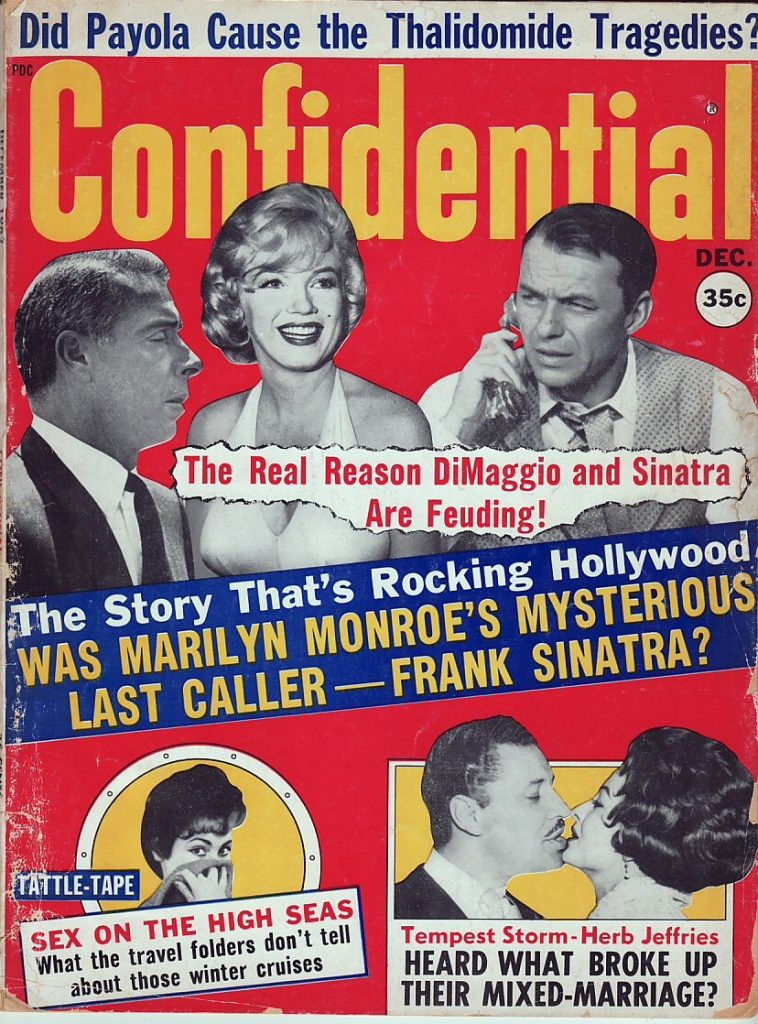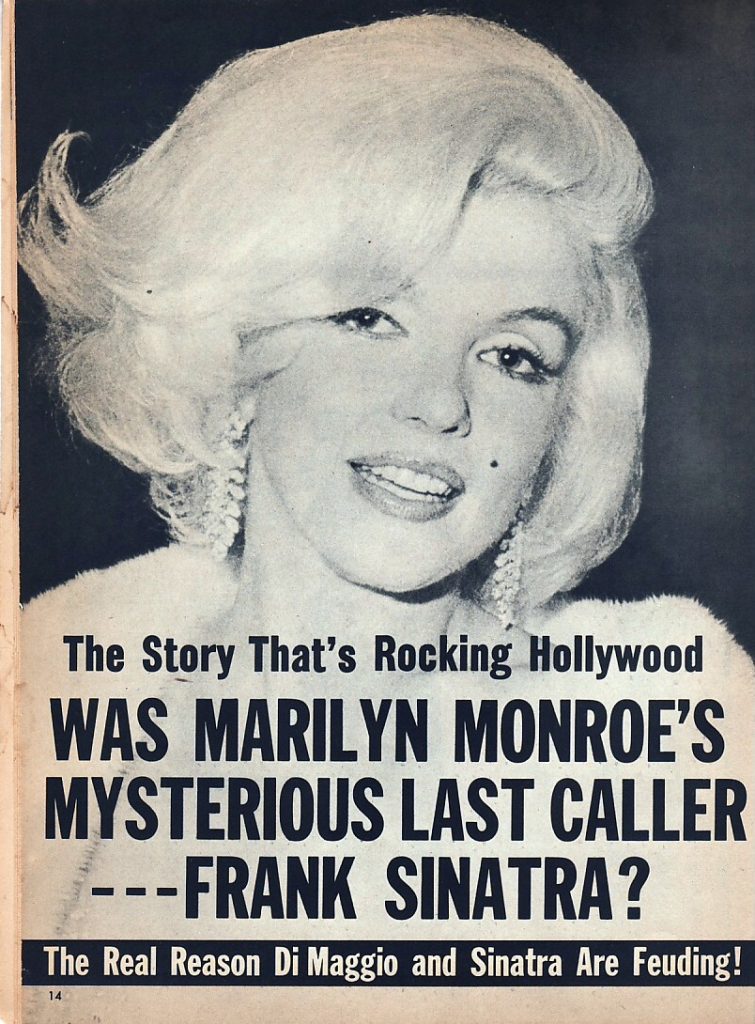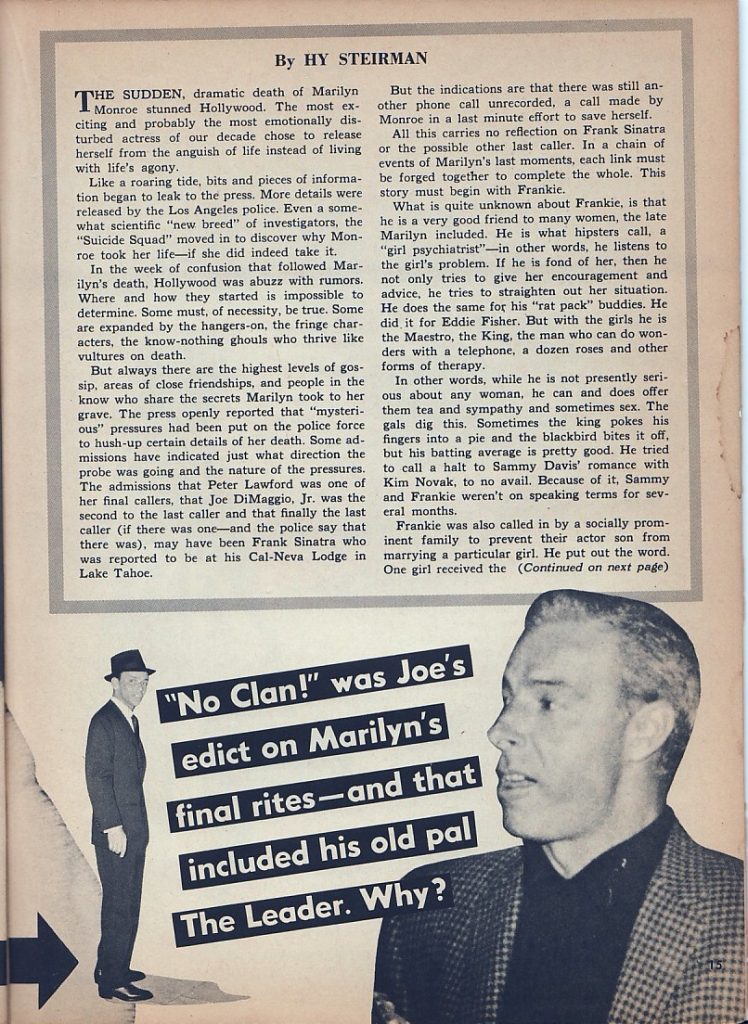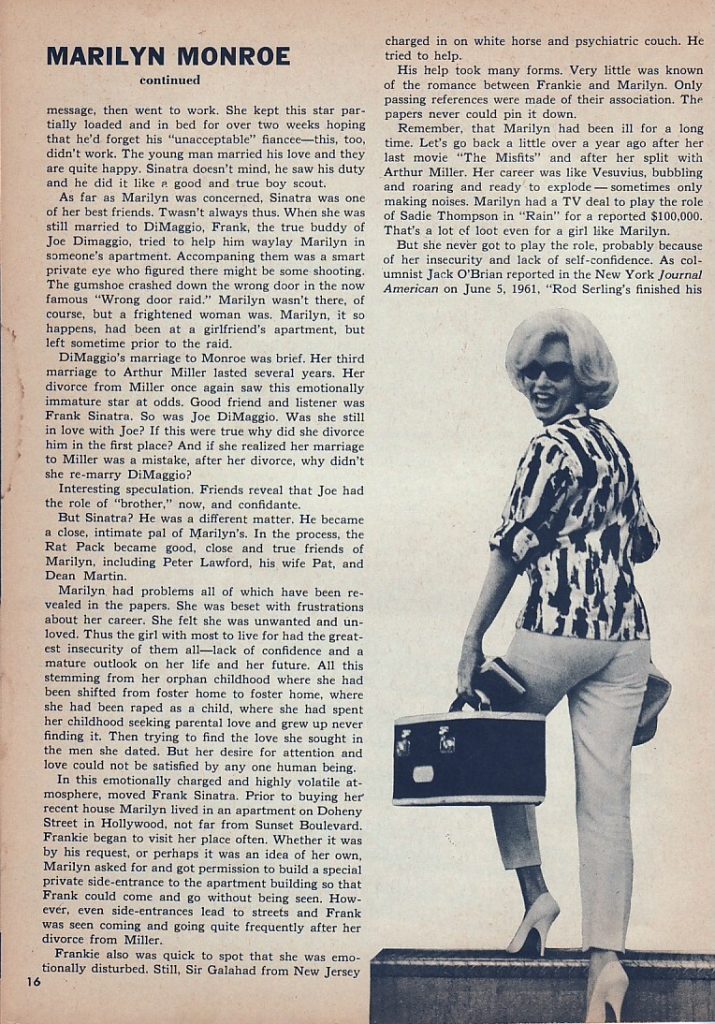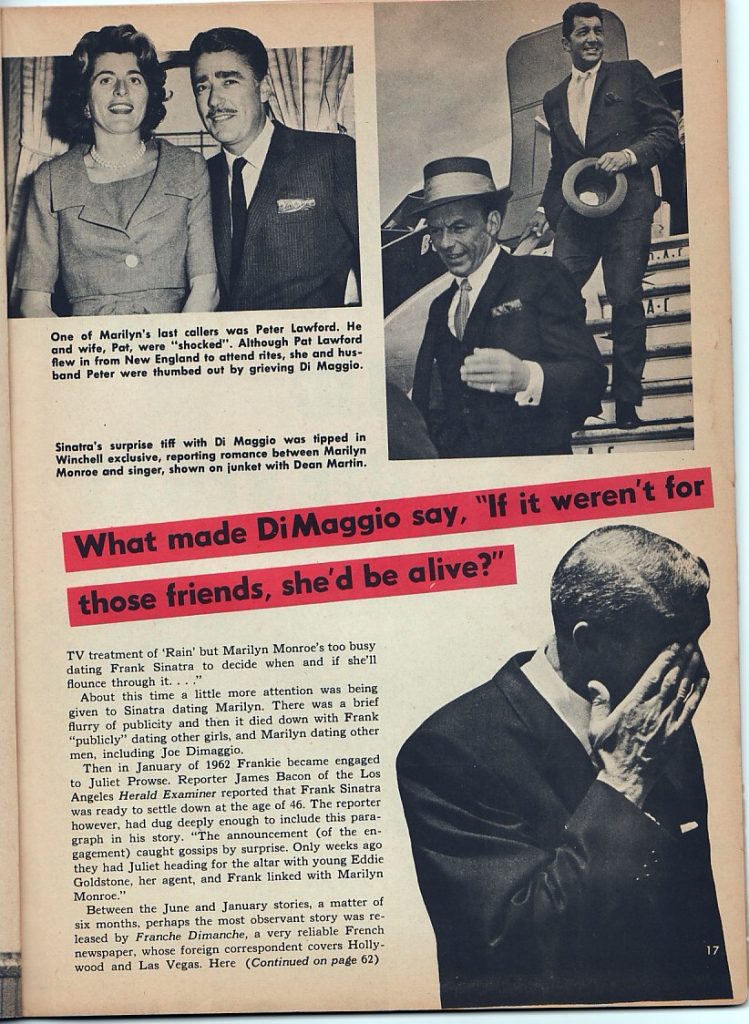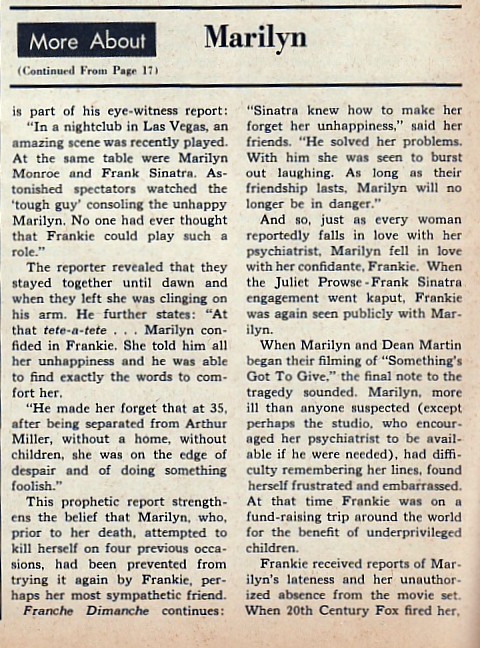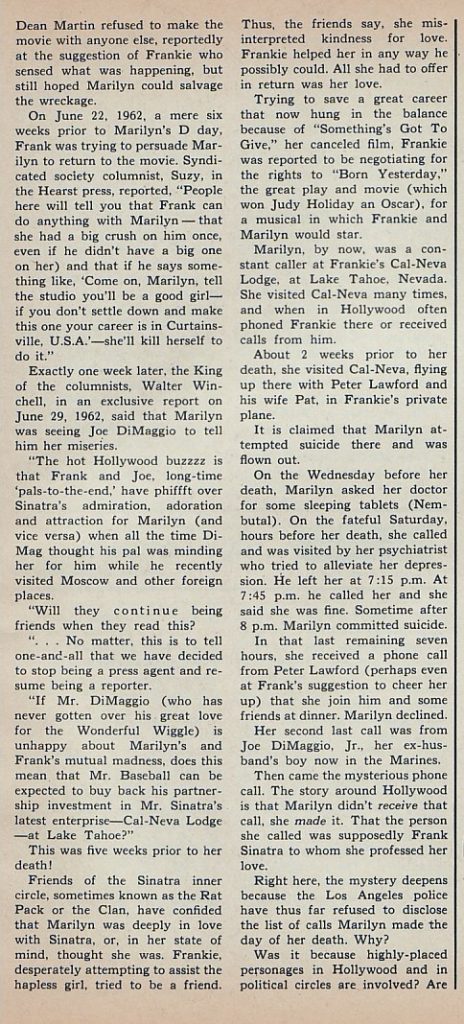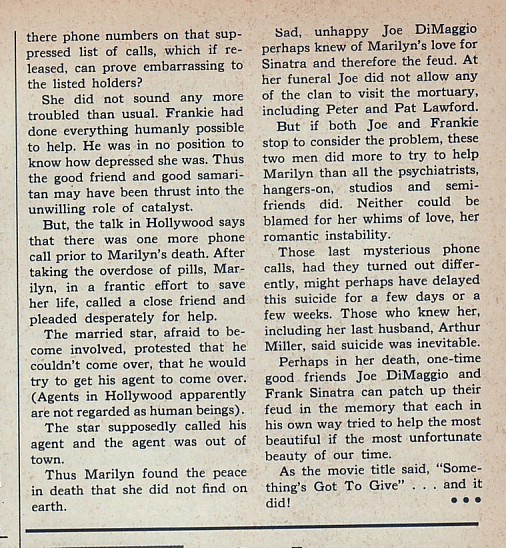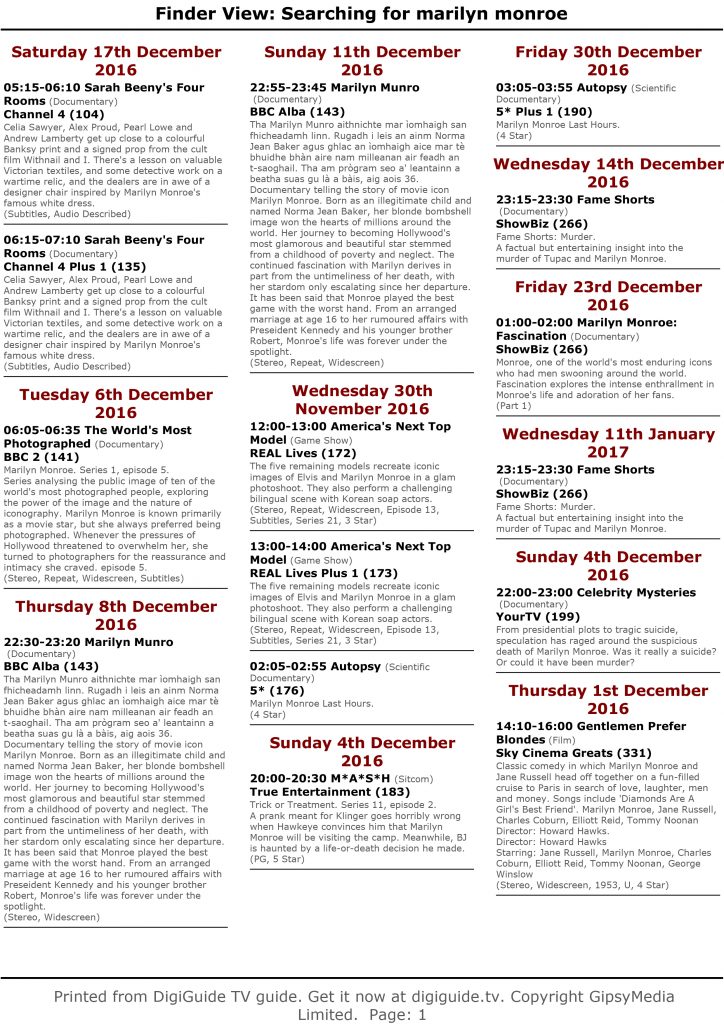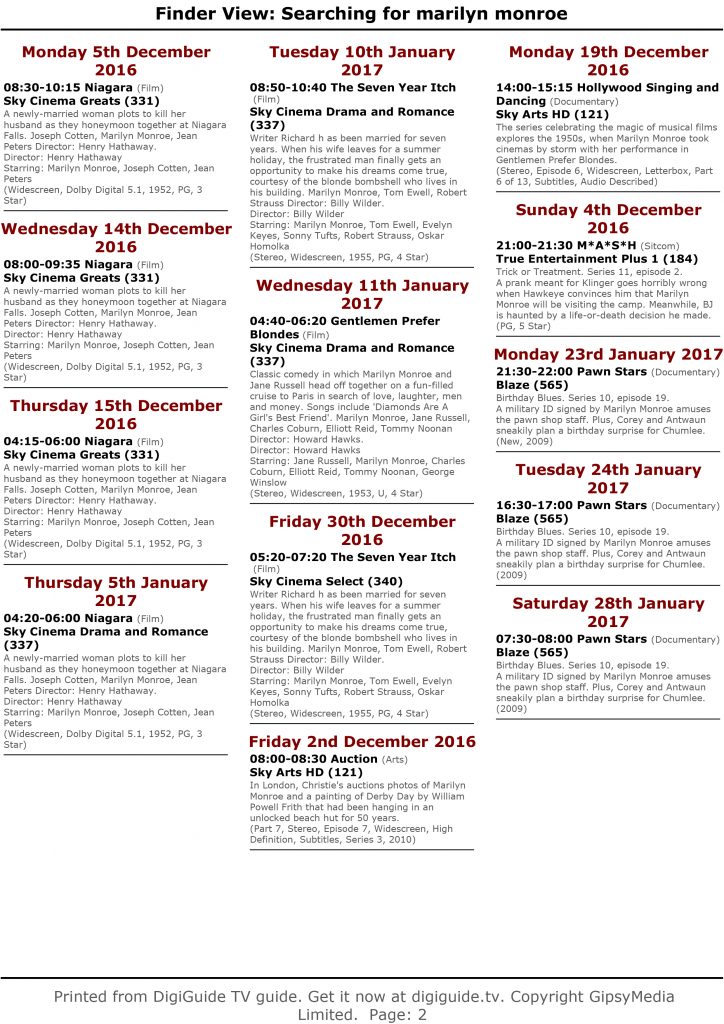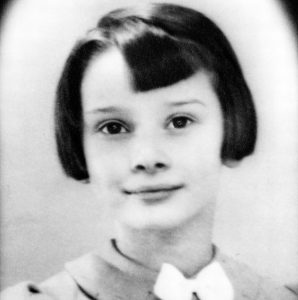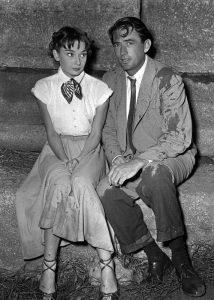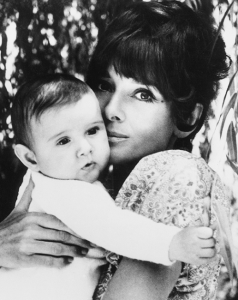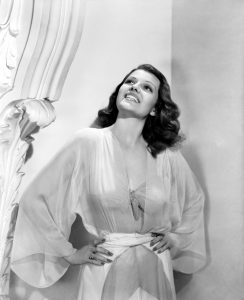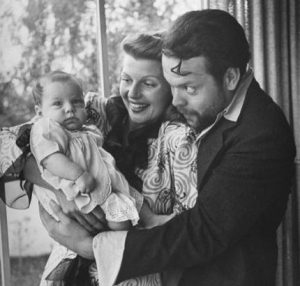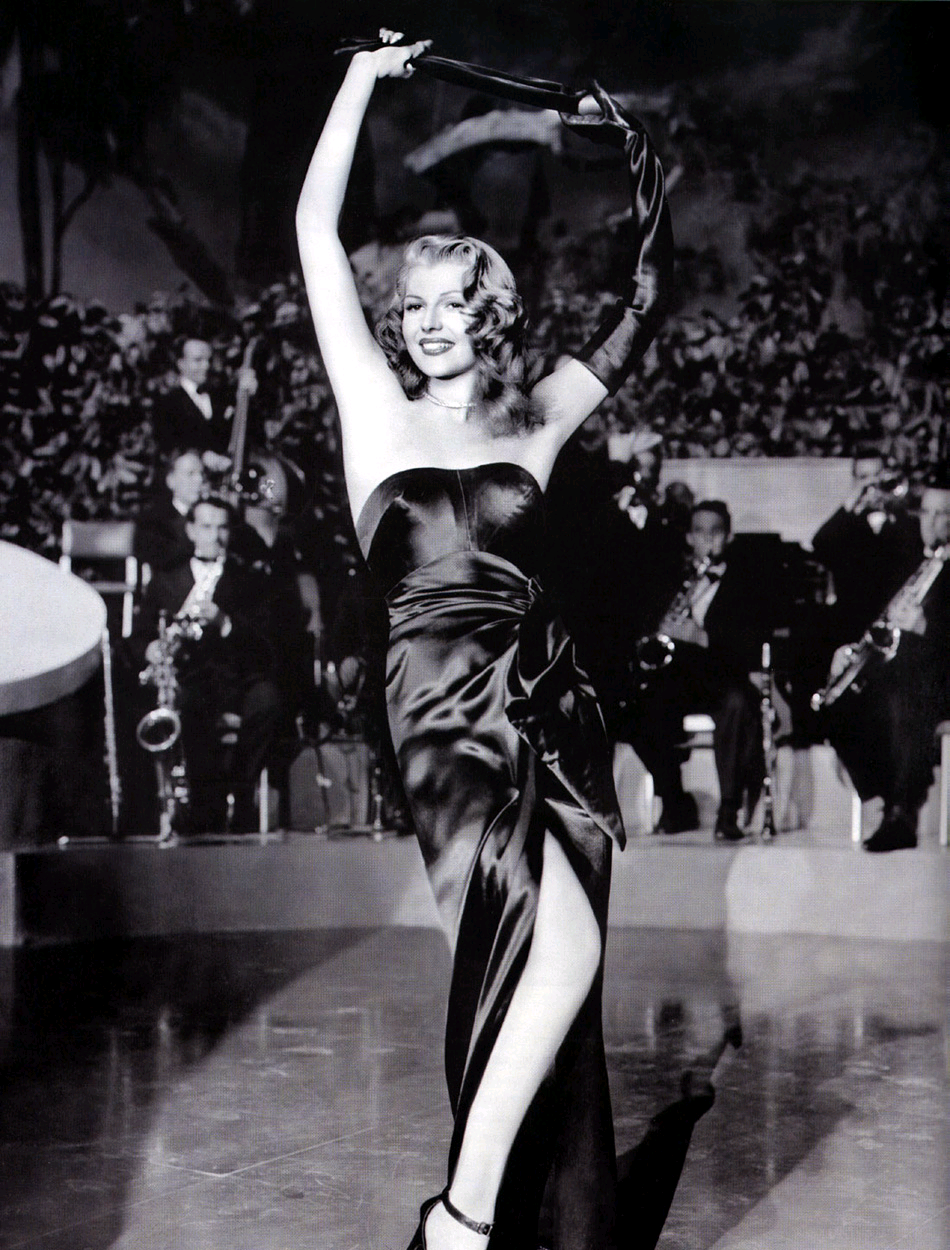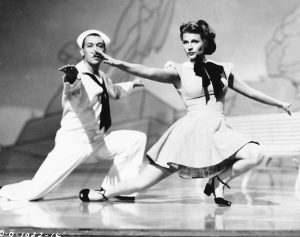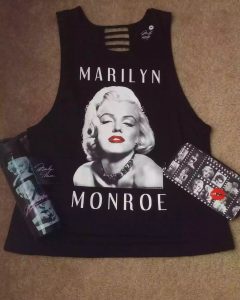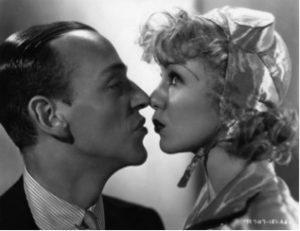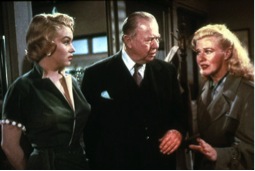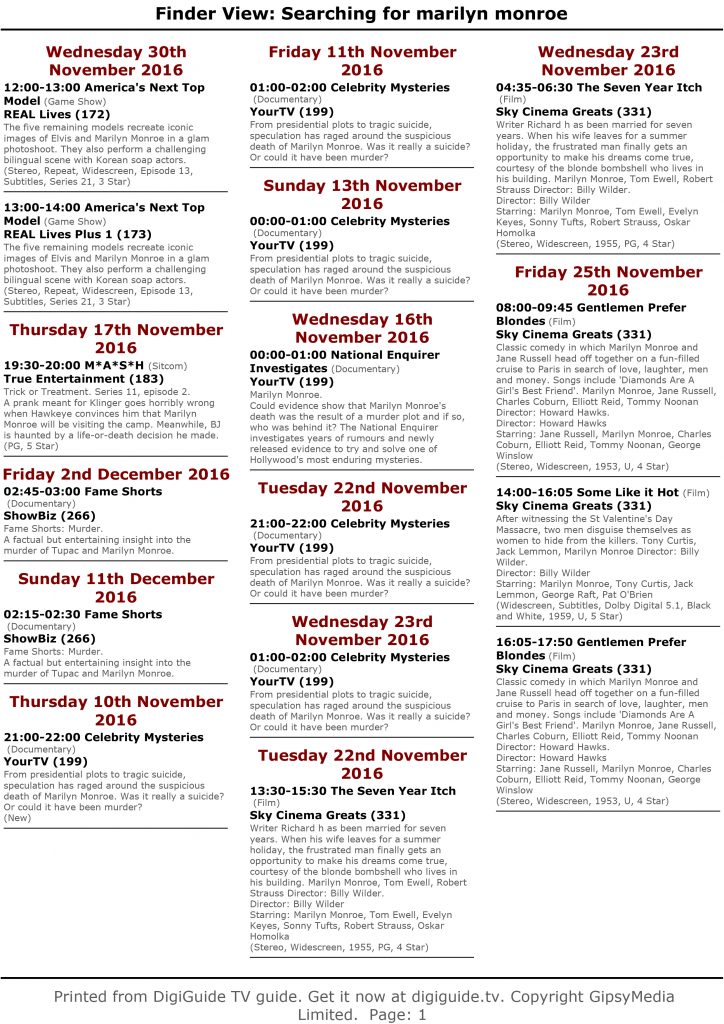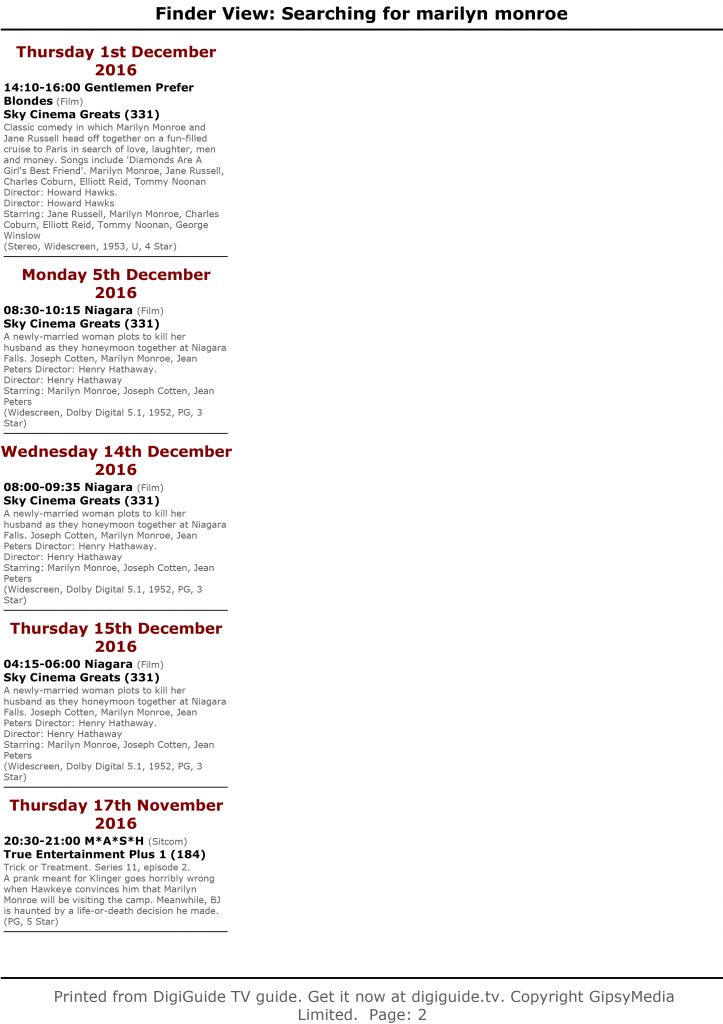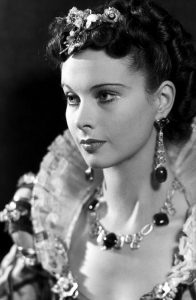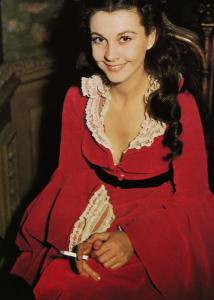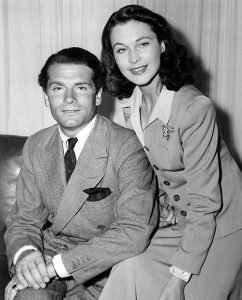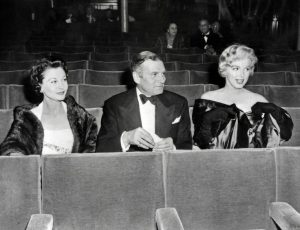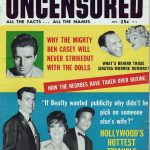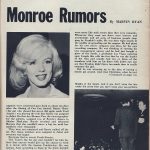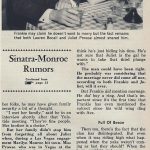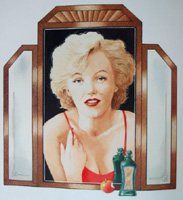
Life and Career
Audrey Kathleen Ruston was born in Belgium on May 4, 1929 to Joseph Hepburn-Ruston and his wife, Baroness Ella van Heemstra. Ella was twice divorced and had two boys from a previous marriage. The couple constantly fought and Joseph’s drinking became a major contributing factor to the end of their marriage. As a result, Joseph walked out on the family when Audrey was just six years old, an event which left her traumatized.
When World War II broke out in 1939, Audrey and her mom were living in Arnhem in the Netherlands, which Ella believed to be safer from Nazi occupation; however, Hitler’s army soon invaded, taking over the town in 1940 and leaving Audrey to spend her childhood and part of her teen years in poverty and suffering from malnutrition and depression.
“People have fears now which are mostly distant and unknown: fears of death or cancer or getting killed in a car smash. I knew the cold clutch of human terror all through my early teens: I saw it, felt it, heard it and it never goes away. You see it wasn’t just a nightmare: I was there and it all happened.”
There was one hobby that became Audrey’s escape. Not long before the Nazis came, Audrey had taken up ballet. She was a natural and ballet soon became her passion. Her mother even ran a dancing academy at one point in which Audrey taught young students to help raise more money for food.
Although the Nazis had gone by 1945 with the German surrender, Audrey was still without much food and money, and at the time, the Red Cross was providing emergency rations, an action which started a fire in Audrey’s heart for wanting to help others as the Red Cross had helped her family.
From there, Audrey continued her dance classes and was soon approached by Dutch film director Charles van der Linden, who was scouting her class one morning in search of a young girl for a small part in his film Dutch in Seven Lessons. Audrey was chosen immediately and was a natural in front of the camera, even with no prior acting training. She soon began auditioning for chorus-girl roles in West End musicals to make more money so that she could continue attending her ballet classes.
By the 1950’s she was signed to Ealing Studios, receiving minor roles and cameos in films. Her first serious relationship was to wealthy Jimmy Hanson. Although they announced their engagement in 1952, it was soon broken off because of conflicting schedules.
Audrey’s big break came one fateful day in Monte Carlo, where she was on location for a comedy. Famed French writer Colette was quickly running out of time searching for the perfect girl to star in the upcoming stage adaptation of her story Gigi. Colette was fascinated by Audrey and her vision of Gigi had come to life; Audrey was soon cast as the lead and was on her way to Broadway.
Gigi was a sold-out hit and Audrey became an overnight success. Her Broadway publicity got her noticed by Hollywood director William Wyler, who had just acquired the option to the comedy Roman Holiday. Gregory Peck was already cast as the male lead, and Wyler was searching for a European actress for his princess for the picture. This film became her next major success. When it opened in 1953, it received rave reviews. This led to Audrey’s first Oscar win, and the first of five academy award nominations.
Following the success of her first Hollywood film, Audrey’s future in movies was secured, next appearing as the female lead in the 1954 hit Sabrina. Soon after, at a cocktail party hosted by Gregory Peck, Audrey met her future husband, actor/writer/director Mel Ferrer. The two quickly fell in love and married in September of 1954 at Lake Lucerne.
Audrey continued her work in motion pictures, landing memorable roles such as Natasha Rostova in War and Peace (1956), Jo Stockton in Funny Face (1957), and Sister Luke in The Nun’s Story (1959). In January of 1960, she welcomed her first and only child with Mel, son Sean Ferrer. Her next major project came in 1961, when she starred in Breakfast At Tiffany’s with her timeless performance as New York party girl Holly Golightly, further cementing her iconic status as an actress. Sadly, Audrey’s marriage with Mel was beginning to crumble. The couple finally divorced in 1968.
Once her marriage with Mel ended, so did her film career, for the most part. After the completion of Wait Until Dark (1967), she retired to Switzerland to devote more time to being a mother to Sean, and made frequent trips to Rome to visit with friends. She soon met her second husband, Italian psychiatrist Andrea Dotti, and the two were married in January of 1969. Her second and last child, son Luca Dotti, was born the following year.
With Dotti’s increasing reputation as a womanizer, this marriage also did not last. The couple would divorce in 1982. Audrey would appear in only four more minor films, returning to Hollywood for Robin and Marian in 1976. Four years later, at a dinner party held in New York, Audrey met her final and greatest love: Dutch television actor Robert Wolders. Although they never married, they would be devoted to each other until her death in 1993.
Although by this time Audrey had become one of the most appreciated stars in the world, the most rewarding experience in her life came when she was given the title of Goodwill Ambassador of UNICEF in 1987. This allowed her to travel to many third-world countries and help hundreds of starving children in horrible living conditions. By working with UNICEF, she felt she had finally reached her life’s mission that had come full circle: to help children in need just as the Red Cross had helped her over 40 years ago.
In September of 1992, upon her return to Switzerland from a UNICEF mission in Somalia, she began suffering from severe pain in her lower stomach. She had unknowingly been carrying a rare form of abdominal cancer which had been slowly growing over the course of several years. By December that same year, after undergoing surgery and chemotherapy, the cancer had metastasized and had become terminal. She passed away peacefully at her home in Switzerland in January of 1993. In her final farewell letter to her sons, she wrote,
“If you ever need a helping hand, it’s at the end of your arm. As you get older, remember you have another hand: the first is to help yourself, the second is to help others.”
In 1993, her son Sean accepted her posthumously awarded Jean Hersholt Humanitarian Award.
Marilyn Connections
Anthony Beauchamp – Photographed both Marilyn and Audrey
Anita Loos – Author of Gentlemen Prefer Blondes. Script writer for Gigi on Broadway.
Richard Avedon – Photographer and friend of both Marilyn and Audrey at around the same time.
Billy Wilder– Director of Sabrina. Director of Seven Year Itch (1955) and Some Like It Hot (1959)
Cecil Beaton – friend of Audrey. Photographed her beginning in the late 1940’s. Worked with her on My Fair Lady. Photographed Marilyn in 1956.
Breakfast At Tiffany’s – Truman Capote initially wanted Marilyn for the role of Holly Golightly in Breakfast At Tiffany’s. She considered the role, but she was advised by various people in her professional circle not to accept it.
Personal Connections
In 1960, Marilyn, married to Arthur Miller at the time, engaged in an affair with Let’s Make Love co-star Yves Montand, who was also married to another woman. During the filming of Sabrina, Audrey, although herself not married at the time, had an affair with married co-star William Holden.
Like Marilyn, who suffered the loss of a child due to a miscarriage in 1956, Audrey had two miscarriages before giving birth to her two healthy sons Sean and Luca.
Also like Marilyn, Audrey is one of the most popular women who have fallen victim to endless misquotes. Nearly everything you encounter on a shirt, Instagram post, purse, or poster is not said by her.
Both Marilyn and Audrey are two incredibly talented women of the silver screen who will stand the test of time. Marilyn will forever live on as America’s beloved bombshell with a heart of gold and a creative mind, and Audrey as both a fashion and movie icon, a symbol of classic elegance, and someone whose tireless efforts as a humanitarian sparked a legacy that will forever be appreciated.
-Ky Monroe for Immortal Marilyn
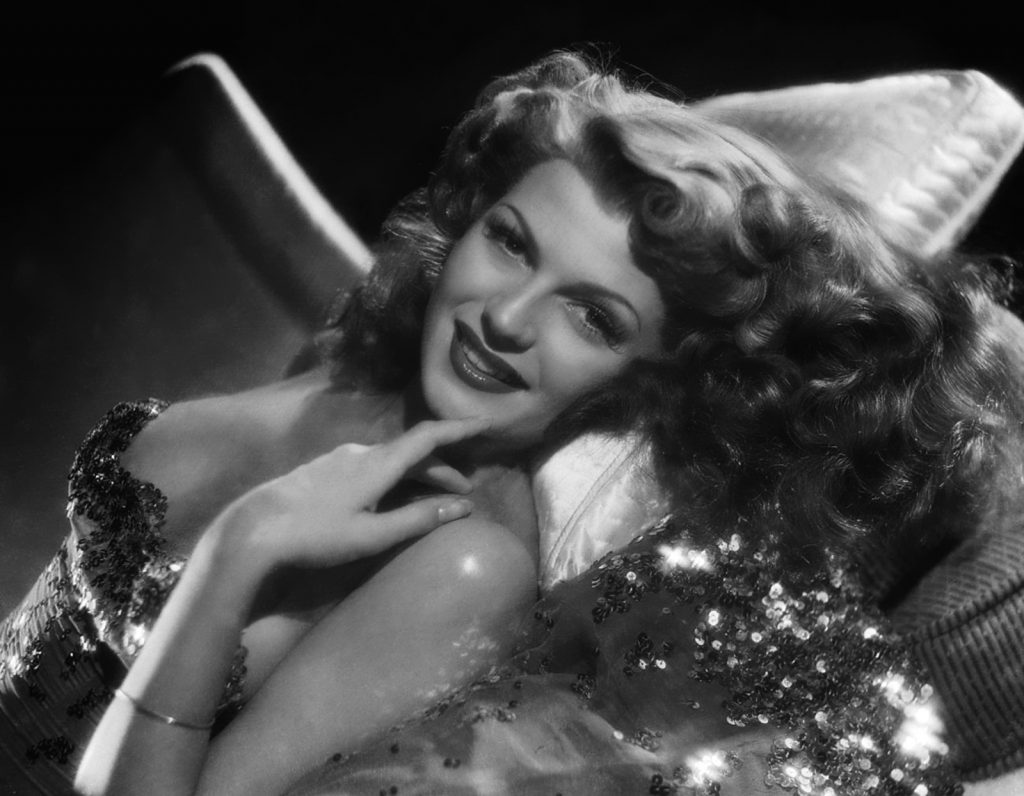
Life and Career
Margarita Carmen Cansino was born in Brooklyn in 1918. Her father, Eduardo, had emigrated from Spain five years before, as one half of The Dancing Cansinos. He was newly married to showgirl Volga Haworth. In 1927, the Cansinos moved to Hollywood, where Eduardo established a dance studio.
At thirteen, Margarita left school and replaced Elisa as her father’s dancing partner. Between shows, Eduardo urged his daughter to mingle with the guests, including many Hollywood executives.
Margarita had already played bit parts in a few movies, and Max Arnow, then casting director at Warner Brothers, arranged a screen test. Winfield Sheehan – then Vice-President of the Fox Film Corporation – was so impressed by Margarita’s beauty that he offered her a short-term contract. But when Sheehan was ousted by Darryl F. Zanuck, Rita was also sacked.
Aged seventeen, Rita began dating Eddie Judson, an older businessman who quickly recognised her potential. They married in 1937, shortly after she was signed by Columbia, the ‘Poverty Row’ studio headed by Harry Cohn. She underwent a dramatic makeover, and began using the surname ‘Hayworth’ (a modification of her mother’s name.)
Rita landed her first important role opposite Cary Grant in Howard Hawks’ Only Angels Have Wings (1939.) Realising he had a valuable property on his hands, Harry Cohn loaned her out to Twentieth Century Fox for Blood and Sand. “She had a tremendous magic back then,” said bandleader Fred Karger, “and you’ve got to remember this town was full of beautiful women.”
But while her career continued to soar, Rita’s marriage had turned into a nightmare. Judson pressurised her to sleep with studio executives, and when Harry Cohn invited the couple to join him and his wife for a weekend on their yacht, Judson urged her to seduce Cohn. This was the last straw for Rita, and an ugly, protracted divorce ensued.
As America entered World War II, a string of hit musicals allowed Rita to show off her warm, vivacious side. She was paired with Fred Astaire in You’ll Never Get Rich and You Were Never Lovelier. In Cover Girl, an early Technicolor musical, Rita danced with Gene Kelly.
Her second husband was the most brilliant, controversial man in Hollywood. Orson Welles had recently seen Bob Landry’s seductive photo of a negligee-clad Rita in Life magazine, and vowed to marry her. Rita was delighted by the birth of their daughter Rebecca, but Welles had no interest in children or domesticity; and though he adored Rita, his career would always come first.
By 1946, Rita had separated from Welles, but was reluctant to get a divorce. She had also started making a movie that would change the course of her career. A definitive ‘film noir’, Gilda told the tale of a wild, free-spirited dancer who runs into an old flame. While many critics found Gilda immoral, the public loved it. Rita would forever be associated with the role, confiding sadly to a friend, “Every man I have ever known has fallen in love with Gilda, and awakened with me.”
Harry Cohn was further aggrieved by Rita’s attempts to reconcile with Orson Welles. Nonetheless, he agreed to allow Welles to star alongside her in The Lady From Shanghai – another classic film noir, but in an even darker vein.
Still hoping to save her marriage, Rita sailed to Europe. The spark was not rekindled, but at a party in Cannes, Rita was introduced to Prince Aly Khan – son of the Aga Khan, spiritual leader of the Muslim world. Although married, Aly had been separated from his wife since the war. In 1949, after Aly’s divorce was finalised, they married in a whirl of publicity. Their daughter Yasmin was born in December. However, life with Aly Khan did not bring the security Rita had hoped for. Like Orson, he had fallen for Rita Hayworth, the love goddess – not the insecure woman she really was.
In 1953 she married Dick Haymes, a former big band singer who exploited her star status to revive his ailing career. After a rocky two-year marriage,she divorced him. She starred opposite Frank Sinatra and Kim Novak in Pal Joey (1957), her last film at Columbia. Her final marriage, to producer James Hill, ended in 1961.
By the early 1960s, Rita was frequently missing cues and blowing lines, which seemed out of character for such a consummate professional. Her final, abandoned role in Tales That Witness Madness (1973) was a sad coda to a magical career.
In 1981, she was diagnosed with Alzheimer’s Disease. Friends and colleagues who had been frustrated with her behaviour now realised the truth of her situation. Rita’s daughter, Princess Yasmin Aga Khan, was appointed her legal guardian. Rita died in 1987, aged sixty-eight.
Marilyn Connections
Early Years: Marilyn also married young in the hope of escaping a difficult childhood. By nineteen she was divorced, and using a stage name inspired by Broadway star Marilyn Miller, and (like Rita) her own mother’s maiden name.
Bob Landry: In 1947, a young Marilyn was photographed by Bob Landry, who had immortalised Rita Hayworth six years before. When Landry worked with Marilyn again, she was a cover girl in her own right. Then in 1953, she was photographed by Milton Greene in a white negligee with black lace overlay, similar to the garment worn by Rita in Landry’s famous pin-up.
Fred Karger: In 1948, Marilyn was briefly under contract at Rita’s home studio, Columbia. While playing the lead in Ladies of the Chorus, she was coached by Columbia’s Head of Music, Fred Karger. He encouraged her to develop her fine singing voice, and an affair began. But he was often cruel, undermining her self-esteem.
Harry Cohn: Marilyn also incurred the wrath of Harry Cohn, refusing to join him for a weekend alone on his yacht. She was quickly dropped by the studio – a decision Cohn would live to regret.
Johnny Hyde: On the advice of her agent, Johnny Hyde, Rita asked Harry Cohn for a 25% share in the net profits of this and all her future films. When he refused, she went on suspension and formed an independent production company – becoming one of the first women in Hollywood to do so. Cohn was forced to concede. Hyde later guided Marilyn through her first significant roles in The Asphalt Jungle and All About Eve.
Jack Cole: In Tonight and Every Night, Gilda and Down to Earth, Rita was choreographed by Jack Cole. I evolved a working routine with [Rita] that I used a lot later, when working with Marilyn Monroe,” Cole told author John Kobal. “So I rehearse with Rita a couple of times around and we’re ready to start. Well, baby, I don’t know what hit me when they turned the camera on. Monroe was the same way – when it was for real, it was like look out!”
Gentlemen Prefer Blondes: Marilyn achieved stardom in this 1953 musical comedy. Director Howard Hawks’ description of her as “unreal,” with a “fairytale” quality, echoed his earlier assessment of Rita. For her signature number, ‘Diamonds Are a Girl’s Best Friend’, Marilyn wore a strapless sheath gown and long gloves – similar to Rita Hayworth’s attire when she danced to ‘Put the Blame on Mame’ in Gilda. Marilyn was choreographed by Jack Cole, and would work with him many times more.
Cohn vs Zanuck: “The only thing [Rita] got worked up about was Harry Cohn,” Cole recalled. At Columbia, he said, “they didn’t treat Rita the other way other studios treated a star … Zanuck was that way with Monroe,” he added. In 1955, Marilyn won a bitter legal battle with Twentieth Century Fox, and formed her own production company in a bid for better roles.
The Story on Page One: “Marilyn Monroe and Jayne Mansfield can have all the headlines,” Rita said in 1958. “From now on the only headlines I want are on my acting.” Rita played a battered wife in Clifford Odets’ The Story on Page One (1959), a role first offered to Marilyn. Something’s Got to Give: Marilyn died of an overdose in 1962, shortly after being fired from her last, incomplete movie. Rita later said of Marilyn:
“Marilyn wasn’t put on. Her femininity was real, and there are very few who are really women on screen – I like to think I was. But I never met Marilyn, so I don’t really know…”
Like Marilyn, Rita was over-worked and under-appreciated during her studio heyday; but as time passed, her myth grew. Both women were named among the roll-call of Hollywood icons in Madonna’s 1990 hit, ‘Vogue’; and in the acclaimed 1994 film, The Shawshank Redemption, one scene shows the hero, wrongly imprisoned for murder, gazing at his only possession – a poster of Rita Hayworth.
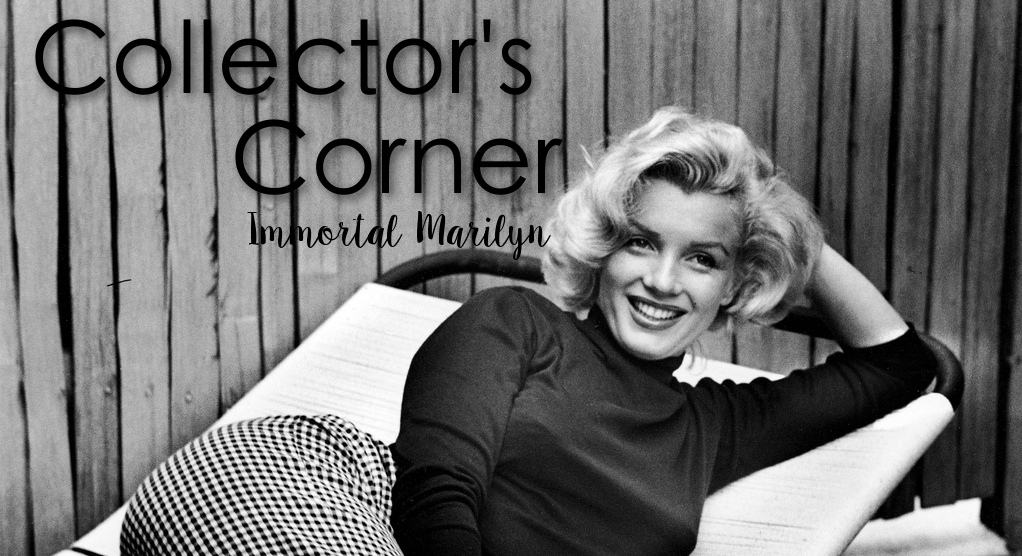
Meet November’s featured collector, IM member Lily Delbrooke!
How long have you been collecting?
I have been collecting Marilyn items since 2012. It all began with a single shirt that I found in my closet. I found out who she was, and began looking up her photos and researching about her; I was amazed by her beauty! I soon began to see how she was literally everywhere; shirts, cups, posters, magazines, clocks, you name it, they have it! I decided that I wanted to collect Marilyn Monroe things since I had been trying to find something I love and to make it a hobby that I would enjoy very much.
What is in your collection? Do you focus on one particular area or collect all kinds of items?
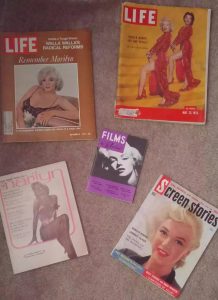 I have a variety of items in my collection. I would say that I mainly focus on books and shirts. I am working on filling up my small book shelf and I have almost purchased every book that I want. I am very picky when it comes to books, I don’t want to have any books that tell lies about her or simply bash her. I like to know that the books that I own are reliable and informative. My other shelves have all kinds of unique items such as cards, flip flops, magnets, calendars, and much more that I enjoy collecting.
I have a variety of items in my collection. I would say that I mainly focus on books and shirts. I am working on filling up my small book shelf and I have almost purchased every book that I want. I am very picky when it comes to books, I don’t want to have any books that tell lies about her or simply bash her. I like to know that the books that I own are reliable and informative. My other shelves have all kinds of unique items such as cards, flip flops, magnets, calendars, and much more that I enjoy collecting.
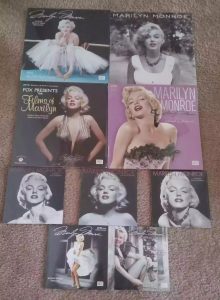 What is your most prized item?
What is your most prized item?
My most prized items would be my vintage Marilyn magazines, it’s incredible to see how the magazines were in those times and what they had in them.
What item would you most like to add to your collection?
I want to have her autograph in my collection, whether it’s on a check or a photograph.
Is there any advice you’d offer to a new collector?
My advice would be to always be smart about what Marilyn items you choose to buy. Don’t buy something simply because it has her face on it, (unless you truly love it of course!) and make sure it has good quality! I have seen a trash can with a small Marilyn sticker slapped onto it for quite a bit of money, and it was really plain and simple!
What do your friends and family think of your collection?
My family and friends are fascinated by my collection and since they know about my Marilyn obsession every time they see something with her they think about me right away, which I love!

Life and career
In most cases, up-and-coming stars modify their birth names to something catchier with the help of their studio heads. This was not the case for Ginger Rogers, born Virginia McMath on the 16th of July in 1911. When her cousin Helen was a toddler, she had trouble saying the name “Virginia,” so instead began saying “Ginga,” and the rest is history.
Ginger’s parents, William McMath and Lela (Owens) McMath were estranged before Ginger was born. William even attempted to kidnap his daughter on two occasions, succeeding the first time. Little Ginger went missing for several days, but with the relentless praying and sleuthing conducted by her mother and the town of Independence, Missouri, she was located at her father’s parents’ house in Kansas City. Her mother remarried to John Logan Rogers in 1920.
“My mother told me I was dancing before I was born.”
Ginger’s career began in 1925 when a fellow schoolmate taught her how to perform the popular dance of the 20’s: the Charleston. Ginger performed remarkably well, which prompted her to enter a Charleston dance contest. The competition brought her to Fort Worth, Texas, where she claimed victory and was offered a chance to perform in the Interstate circuit for four weeks. Later, after getting together with a small group of friends, the stage act “Ginger and the Redheads” was formed. At fourteen years old, Ginger and her trio traveled across the country from 1925 to 1928 performing shows at several theaters. Once they disbanded, Ginger continued to pursue more roles onstage and began getting more and more noticed. Through this, she gained valuable stage experience.
After catching the eye of Walter Wagner of Paramount and being screen tested, Ginger was signed to a seven year contract in January of 1930. Her first film under a major studio was Young Man of Manhattan (1930). She soon divorced Jack Pepper, whom she had married at seventeen, the first of her five eventual divorces. In June of 1931, she was contacted by a producer at RKO who was interested in signing her on for a picture for Pathe Exchange. After successfully cancelling her contract with Paramount, she was off to Hollywood, bringing her strong-hearted mother, who also acted as her manager, with her.
It was there in 1933 that Ginger began her legendary on-screen partnership with Fred Astaire. Beginning with Flying Down To Rio and ending in 1939 with The Story of Vernon and Irene Castle, the handful of Astaire-Rogers productions that were made went down in history. These days, rumors love to circulate about the true nature of their relationship, but the truth is that they were only close friends. Years before working together, Fred and Ginger did go on a date after they met in New York, but nothing serious came of it. Both had a mutual respect for each other’s work, and by the time they were reunited in Hollywood, Fred was married to Phyllis Potter, who wouldn’t even allow them to kiss on screen. Although the dancing duo eventually parted to pursue more diverse roles with different co-stars, they will forever be remembered as two of the most beloved dancers in cinema history.
Once her memorable stint with Fred was completed, she moved on to receive more parts in comedies and dramas rather than TV musicals. In 1941, she won an Oscar for her performance in Kitty Foyle. Throughout the rest of her career, she appeared in countless films, not to mention a long list of stage productions and several television spots. In 1971, she performed the Charleston for the first time in decades for a television episode of Lucille Ball’s Here’s Lucy. She divorced five times, the cause most often because of her spouse’s problem with alcohol. Ginger was raised with a prominent Christian Science background which she practiced and carried her entire life. She was adamantly against drinking and serving alcohol. Instead of beer, the bar at her Hollywood home served ice-cream soda.
Her final film performance was in the 1965 film Harlow, in which she played Jean Harlow’s mother. Her last public appearance was in 1995, when she was honored with the Women’s International Living Legacy Award. That year, she suffered a stroke, leaving her wheelchair bound. As a believer in Christian Science, she chose not to receive modern medical help. She passed away of a heart attack on April 25, 1995.
“Looking back at my life’s voyage, I can only say that it has been a golden trip. A thousand words are not enough to express my gratitude for the excitement, glamour, adventure, and infinite variety I have experienced.”
Marilyn connections
Billy Wilder – Directed Ginger in his first American film The Major and the Minor (1942). Directed Marilyn in The Seven Year Itch (1955) and Some Like It Hot (1959).
Jean Louis – A favorite designer among both women. He worked with both for several years.
Harry Cohn – Terminated Marilyn’s contract with Columbia. Paid to test Ginger in the early 30’s but did not sign her. Ginger was disgusted by the passes he made at her. “I stood up fearlessly to his advances by reminding him that I knew his wife.”
Christian Science – Marilyn was surrounded by the influence of Christian Science beginning in her early teen years. Her mother became a Christian Scientist once she was introduced to the belief system by Marilyn’s Aunt Grace and Aunt Ana, who were also believers. Lela Rogers was an adamant Christian Scientist, and Ginger was raised the same way from birth. She carried her faith with her throughout her life.
Misquoting – Although Ginger isn’t misquoted nearly as much as much as Marilyn is, she does occasionally fall victim to her name being wrongly attached to phrases she did not say. The most popular example would be “I did everything [Fred Astaire] did, but backwards and in high heels.” A clever and true quote, but one that has relentlessly been attributed to not only Ginger herself, but a plethora of other individuals. This quote originally comes from a newspaper comic by Bob Thaves.
While Marilyn and Ginger never became close friends, they worked well together on two films, Monkey Business (1952) and We’re Not Married (1952). Both actresses also did not have children.
In her 1991 autobiography, coincidentally titled Ginger: My Story, Ginger tells of a time in which she was at work for 20th Century Fox on Black Widow while Marilyn was in the middle of filming There’s No Business Like Show Business. According to Ginger, Marilyn stopped by her dressing room one day for a visit, and recalled Marilyn getting slightly emotional and teary-eyed when Ginger asked how things were going with Joe DiMaggio, who Marilyn had been newly married to. Another memory with Marilyn is one Sunday morning when Ginger was attending her regular church on North Crescent Heights Boulevard in Los Angeles. Upon looking towards the back, she observed Marilyn seated in the last row.
“It was the only time I saw her there. Perhaps if Marilyn had become seriously interested in this way of thinking, the tragic end of her life might have been avoided.”
Ginger Rogers will always remain one of the brightest stars of her time, as will Marilyn Monroe. Although Ginger is most commonly remembered as the dance partner to Fred Astaire, she rightfully earns her spot as one of the most talented actresses on the silver screen for her large variety of other film credits. She will continue to illuminate screens across the world with her grace, talent, and loveable charm for generations to come. Both Ginger and Marilyn have earned iconic status in the hearts of millions in their own unique way.
-Ky Monroe for Immortal Marilyn

Life and Career
Vivian Mary Hartley was born in 1913, in Darjeeling, India, where she took to the stage for the first time at the age of 3 to recite Little Bo Peep. She travelled around Europe with her parents and was educated in multiple schools in locations like London and Paris. In 1931, the family settled back in England, and Vivian began her efforts to be an actress in earnest. She enrolled at the Royal Academy of Dramatic Art that same year, and also met the man who would become her first husband, Leigh Holman. They were married in 1932.
Although marriage and the birth of daughter Suzanne took her away from acting, she was drawn back. A small role in the film Things Are Looking Up led to an agent and a new name: Vivien Leigh. She soon after took a stage role in The Mask of Virtue, and it was in this play that she caught the eye of actor Laurence Olivier. It was the beginning of one of the great love stories in Hollywood history.
By the time Vivien and Laurence appeared together in Fire Over England in 1937, their friendship had developed into an affair; both were still married. Vivien had read the novel Gone With the Wind and set her sights not only on Olivier, but on the most coveted role in Hollywood. As David O’Selznick hunted for his Scarlett, Vivien’s star was on the rise. She appeared in multiple stage productions and films, gaining notice in America. When Olivier headed to America to film Wuthering Heights, Vivien followed, and presented herself as the future Scarlett O’Hara. The rest, as they say, is history.
With filming already underway, Vivien threw her hat in the ring and won the role of Scarlett O’Hara in Gone With the Wind opposite Clark Gable, in spite of having been previously considered “too British” to play a Southern Belle. She would win the Best Actress Oscar award for her role, and became one of the biggest stars in the world.
In 1940, both Vivien and Laurence divorced their spouses, and were promptly married in California. Devoted to each other, the two aimed to take on as many projects together as possible, both on the stage and in films. While both enjoyed film success, their hearts were in the theatre. In 1947, when Olivier was knighted, Vivien Leigh became Lady Olivier.
Leigh won her second Academy Award for Best Actress in A Streetcar Named Desire in the role of Blanche DuBois, which she had previously played on the stage. It was 1951, and a young actress named Marilyn Monroe was rising to stardom. Meanwhile, troubles were ahead for Vivien Leigh.
Previously diagnosed with tuberculosis (which didn’t stop her from a lifelong smoking habit), Leigh now faced mental illness. In 1953, she had a breakdown on the set of Elephant Walk. She was replaced by Elizabeth Taylor in the film. Olivier took her home to England, where she faced months of recovery. Later that year, she recovered enough to return to the stage opposite Olivier in The Sleeping Prince. Three years later Olivier would film the movie version with Marilyn in the role originated by his wife on the stage.
During this same time period, a miscarriage led to another period of mental trouble for Leigh. She had been diagnosed with manic depression, and her marriage to Olivier was nearing the end. They divorced in 1960. Vivien would battle mental illness for the rest of her life.
Vivien continued to have success on the stage and screen, winning a Tony Award in 1963 for Tovarich. In 1965, she made her final film appearance in Ship of Fools. Two years later, tuberculosis claimed her life at the age of 53.
Marilyn Connections
Vivien Leigh’s most obvious connection to Marilyn was The Prince and the Showgirl, the film version of The Sleeping Prince which starred Marilyn opposite Laurence Olivier. The strain in the Olivier marriage was already evident during filming, and Leigh’s mental illness no doubt had an impact on the difficulties that plagued the set. In 1960 Vivien stated in an interview that it was her idea to cast Marilyn, having seen How to Marry a Millionaire:
“I thought, heaven help me, that she was very funny. I said to Larry: This girl is wonderful in comedy”
Aside from that movie, Vivien and Marilyn had other connections. Vivien famously starred opposite Clark Gable in Gone With the Wind – Marilyn would star opposite him in The Misfits. Another Gone With the Wind co-star, Rand Brooks (Charles Hamilton) starred opposite Marilyn in her first starring role in the film Ladies of the Chorus.
In A Streetcar Named Desire, Vivien starred opposite Marilyn’s friend and Actor’s Studio colleague, Marlon Brando. The film was also directed by Marilyn’s friend Elia Kazan.
The original director of Gone With the Wind was George Cukor, who would go onto direct Marilyn in Let’s Make Love and her final unfinished film, Something’s Got to Give. Unlike Marilyn, Vivien was said to have gotten along well with Cukor.
Like Marilyn, Vivien frequently felt that her beauty kept her from being taken seriously as an actress:
“People think that if you look fairly reasonable, you can’t possibly act, and as I only care about acting, I think beauty can be a great handicap, if you really want to look like the part you’re playing, which isn’t necessarily like you.”
Both women faced a struggle with depression, and both also suffered from severe insomnia. Like Marilyn, Leigh’s mental illness put serious strain on her marriage and was a factor in her divorce from Olivier. Sadly, both also passed away too young.
-Leslie Kasperowicz for Immortal Marilyn


